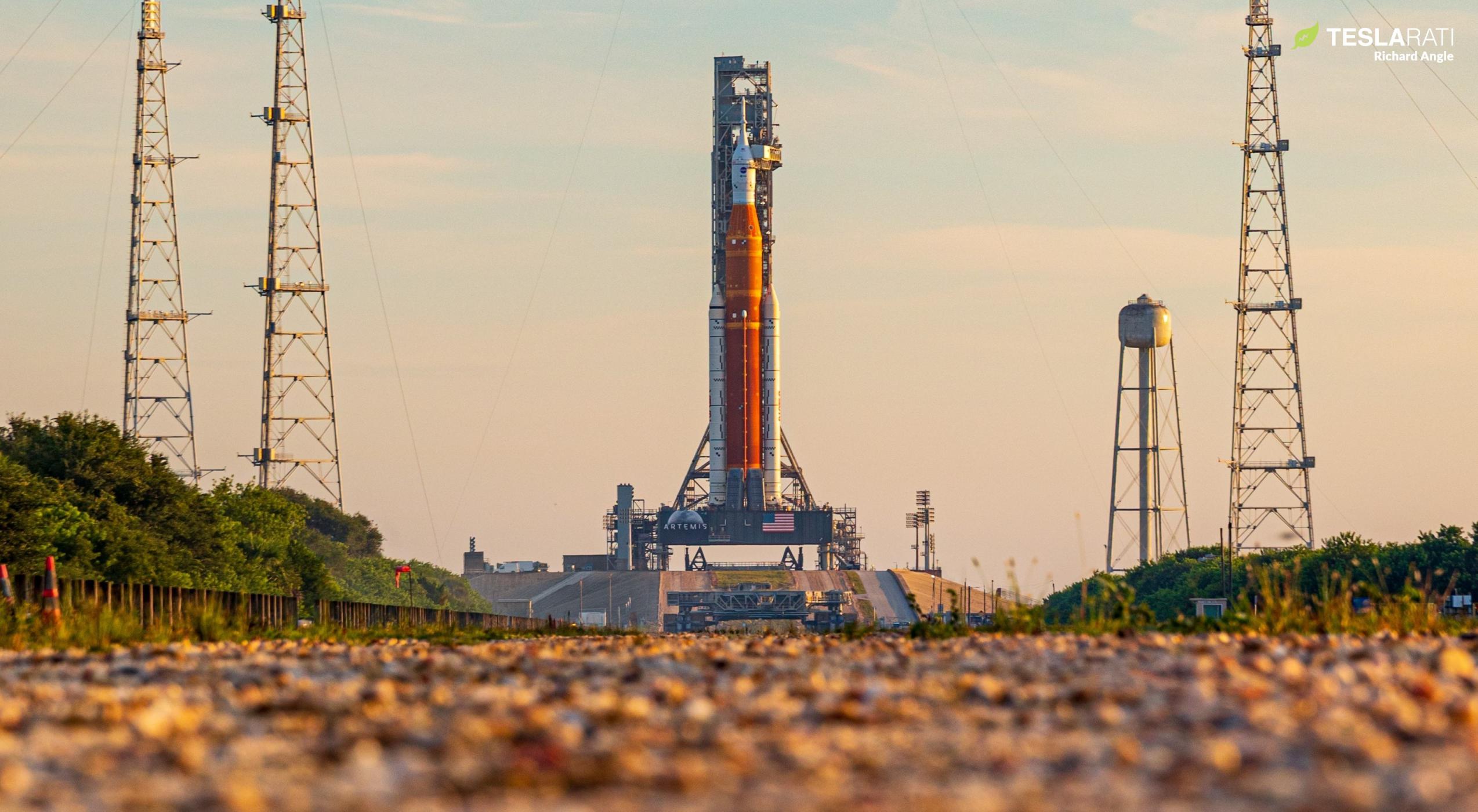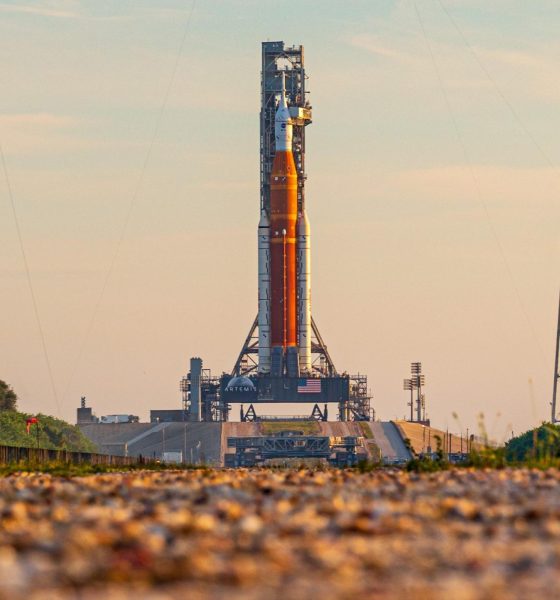

News
NASA to retry Artemis I Moon rocket launch on Saturday
NASA says it has alleviated issues that arose during its first Space Launch System (SLS) Moon rocket launch attempt and will try again as early as Saturday, September 3rd.
Measuring around 98 meters (~322 feet) tall and capable of launching up to 95 tons (~210,000 lb) to low Earth orbit, the SLS rocket’s first launch – Artemis I – will attempt to send NASA Orion spacecraft on its way to lunar orbit. If all goes to plan, a partial prototype of the deep space crew transport vehicle will enter orbit spend several weeks around the Moon, where it will attempt to prove that Orion is safe and ready to launch NASA astronauts.
Approximately six years behind schedule and tens of billions of dollars over budget, the combined Orion spacecraft and SLS rocket were originally expected to debut in 2016 when Congress legally required NASA to develop the combined system in 2011. It would be difficult for the stakes to be much higher.
Now, after an unsuccessful August 29th launch attempt that turned into a wet dress rehearsal test as a result of poor planning, NASA is ready to try again.
SLS is scheduled to lift off from NASA’s Kennedy Space Center (KSC) LC-39B pad no earlier than (NET) 2:17 pm EDT (18:17 UTC) on Saturday, September 3rd. Like the first, the window lasts for two hours, providing some flexibility for NASA to troubleshoot any other minor problems that might crop up during the second launch attempt.
During the first SLS launch attempt, several problems arose, including a possible crack in Core Stage foam insulation, a misbehaving vent valve, a hydrogen fuel leak, and weather concerns that delayed the start of propellant loading by more than an hour. The most important problem, causing NASA to abort its first attempt at T-40 minutes to liftoff, involved Core Stage engine chill systems.
At the time, available data suggested that one of the Core Stage’s four modified and flight-proven Space Shuttle Main Engines (known as RS-25) was unable to chill down to the temperatures required for safe ignition. In a September 1st press conference, after more analysis, NASA now says that the rocket was, in fact, correctly trickling liquid hydrogen fuel through all four engines and that all engines were likely ready to go. The agency and its contractors say they are confident that the true cause of the unfavorable readings was a faulty temperature sensor.
In an earlier press conference, senior officials noted that the Boeing-built SLS Core Stage is designed in a way that makes those faulty temperature sensors virtually inaccessible without major work – and certainly not while the rocket is still at the launch pad. A rollback to NASA’s Vehicle Assembly Building (VAB) could easily delay the next SLS launch attempt by 4-6 weeks, if not longer.
Perhaps as a result of the looming consequences of another rollback, instead of sending the rocket back to fix the newly discovered sensor issue, NASA officials now say they never actually needed the broken sensor and can get by without it working properly. That doesn’t entirely explain why NASA fully aborted an SLS launch attempt as a direct result of not liking the data produced by said sensor a few days prior. Nonetheless, the officials say that by analyzing several other unspecified telemetry readings within the RS-25s and SLS plumbing, they can effectively infer that the engines have been chilled to the right temperature.
In theory, if no other issues arise in the remaining 40 minutes leading up to launch, that should allow NASA to confidently launch SLS without having to replace components deep within the rocket.
NASA will begin live coverage of its next SLS launch attempt on NASA TV at 5:45 am EDT (09:45 UTC), followed by a separate hosted broadcast (the agency’s first attempt at a 4K launch webcast) beginning at 12:15 pm EDT (16:15 UTC).

News
Tesla is not sparing any expense in ensuring the Cybercab is safe
Images shared by the longtime watcher showed 16 Cybercab prototypes parked near Giga Texas’ dedicated crash test facility.

The Tesla Cybercab could very well be the safest taxi on the road when it is released and deployed for public use. This was, at least, hinted at by the intensive safety tests that Tesla seems to be putting the autonomous two-seater through at its Giga Texas crash test facility.
Intensive crash tests
As per recent images from longtime Giga Texas watcher and drone operator Joe Tegtmeyer, Tesla seems to be very busy crash testing Cybercab units. Images shared by the longtime watcher showed 16 Cybercab prototypes parked near Giga Texas’ dedicated crash test facility just before the holidays.
Tegtmeyer’s aerial photos showed the prototypes clustered outside the factory’s testing building. Some uncovered Cybercabs showed notable damage and one even had its airbags engaged. With Cybercab production expected to start in about 130 days, it appears that Tesla is very busy ensuring that its autonomous two-seater ends up becoming the safest taxi on public roads.
Prioritizing safety
With no human driver controls, the Cybercab demands exceptional active and passive safety systems to protect occupants in any scenario. Considering Tesla’s reputation, it is then understandable that the company seems to be sparing no expense in ensuring that the Cybercab is as safe as possible.
Tesla’s focus on safety was recently highlighted when the Cybertruck achieved a Top Safety Pick+ rating from the Insurance Institute for Highway Safety (IIHS). This was a notable victory for the Cybertruck as critics have long claimed that the vehicle will be one of, if not the, most unsafe truck on the road due to its appearance. The vehicle’s Top Safety Pick+ rating, if any, simply proved that Tesla never neglects to make its cars as safe as possible, and that definitely includes the Cybercab.
Elon Musk
Tesla’s Elon Musk gives timeframe for FSD’s release in UAE
Provided that Musk’s timeframe proves accurate, FSD would be able to start saturating the Middle East, starting with the UAE, next year.

Tesla CEO Elon Musk stated on Monday that Full Self-Driving (Supervised) could launch in the United Arab Emirates (UAE) as soon as January 2026.
Provided that Musk’s timeframe proves accurate, FSD would be able to start saturating the Middle East, starting with the UAE, next year.
Musk’s estimate
In a post on X, UAE-based political analyst Ahmed Sharif Al Amiri asked Musk when FSD would arrive in the country, quoting an earlier post where the CEO encouraged users to try out FSD for themselves. Musk responded directly to the analyst’s inquiry.
“Hopefully, next month,” Musk wrote. The exchange attracted a lot of attention, with numerous X users sharing their excitement at the idea of FSD being brought to a new country. FSD (Supervised), after all, would likely allow hands-off highway driving, urban navigation, and parking under driver oversight in traffic-heavy cities such as Dubai and Abu Dhabi.
Musk’s comments about FSD’s arrival in the UAE were posted following his visit to the Middle Eastern country. Over the weekend, images were shared online of Musk meeting with UAE Defense Minister, Deputy Prime Minister, and Dubai Crown Prince HH Sheikh Hamdan bin Mohammed. Musk also posted a supportive message about the country, posting “UAE rocks!” on X.
FSD recognition
FSD has been getting quite a lot of support from foreign media outlets. FSD (Supervised) earned high marks from Germany’s largest car magazine, Auto Bild, during a test in Berlin’s challenging urban environment. The demonstration highlighted the system’s ability to handle dense traffic, construction sites, pedestrian crossings, and narrow streets with smooth, confident decision-making.
Journalist Robin Hornig was particularly struck by FSD’s superior perception and tireless attention, stating: “Tesla FSD Supervised sees more than I do. It doesn’t get distracted and never gets tired. I like to think I’m a good driver, but I can’t match this system’s all-around vision. It’s at its best when both work together: my experience and the Tesla’s constant attention.” Only one intervention was needed when the system misread a route, showcasing its maturity while relying on vision-only sensors and over-the-air learning.
News
Tesla quietly flexes FSD’s reliability amid Waymo blackout in San Francisco
“Tesla Robotaxis were unaffected by the SF power outage,” Musk wrote in his post.

Tesla highlighted its Full Self-Driving (Supervised) system’s robustness this week by sharing dashcam footage of a vehicle in FSD navigating pitch-black San Francisco streets during the city’s widespread power outage.
While Waymo’s robotaxis stalled and caused traffic jams, Tesla’s vision-only approach kept operating seamlessly without remote intervention. Elon Musk amplified the clip, highlighting the contrast between the two systems.
Tesla FSD handles total darkness
The @Tesla_AI account posted a video from a Model Y operating on FSD during San Francisco’s blackout. As could be seen in the video, streetlights, traffic signals, and surrounding illumination were completely out, but the vehicle drove confidently and cautiously, just like a proficient human driver.
Musk reposted the clip, adding context to reports of Waymo vehicles struggling in the same conditions. “Tesla Robotaxis were unaffected by the SF power outage,” Musk wrote in his post.
Musk and the Tesla AI team’s posts highlight the idea that FSD operates a lot like any experienced human driver. Since the system does not rely on a variety of sensors and a complicated symphony of factors, vehicles could technically navigate challenging circumstances as they emerge. This definitely seemed to be the case in San Francisco.
Waymo’s blackout struggles
Waymo faced scrutiny after multiple self-driving Jaguar I-PACE taxis stopped functioning during the blackout, blocking lanes, causing traffic jams, and requiring manual retrieval. Videos shared during the power outage showed fleets of Waymo vehicles just stopping in the middle of the road, seemingly confused about what to do when the lights go out.
In a comment, Waymo stated that its vehicles treat nonfunctional signals as four-way stops, but “the sheer scale of the outage led to instances where vehicles remained stationary longer than usual to confirm the state of the affected intersections. This contributed to traffic friction during the height of the congestion.”
A company spokesperson also shared some thoughts about the incidents. “Yesterday’s power outage was a widespread event that caused gridlock across San Francisco, with non-functioning traffic signals and transit disruptions. While the failure of the utility infrastructure was significant, we are committed to ensuring our technology adjusts to traffic flow during such events,” the Waymo spokesperson stated, adding that it is “focused on rapidly integrating the lessons learned from this event, and are committed to earning and maintaining the trust of the communities we serve every day.”








